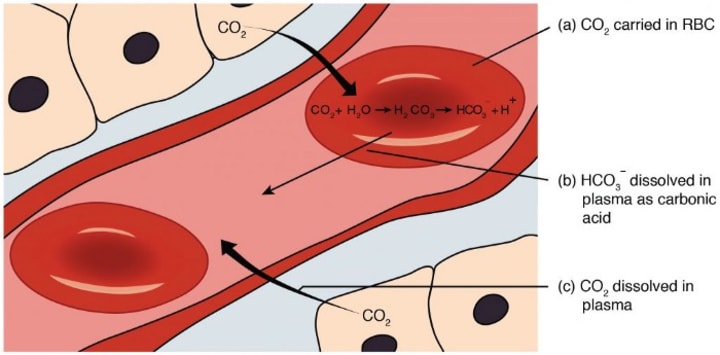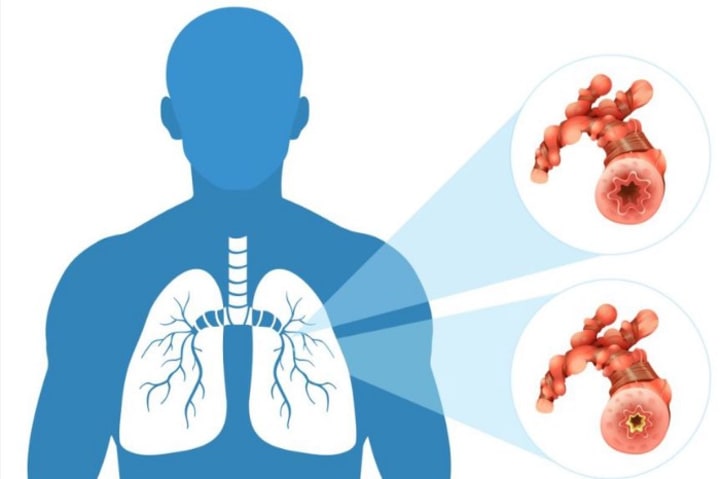
Let’s practice the power of nasal breathing!
Does anyone else go running less because of COVID-19? This is a frustrating time for all runners, especially people like me, who love running under the sun and the breath of fresh air rather than running on a treadmill.
While we are not allowed or willing to go outside often, there are many things that we can try to improve our training techniques. This time, I am going to talk about something we do 7x24 — Nasal Breathing — which is the way our bodies were designed to breathe correctly.
I picked this practice up from the books below:
Respiration is more than just CO2 and O2.
Respiration is the most critical reflex action of human beings. Our respiratory system includes airways, lungs, blood vessels, nose, and mouth. Moreover, the muscles that power our lungs are also part of the respiratory system.
Aerobic Respiration during running (Step-by-Step)
(I skipped the process of anaerobic respiration as it is out of the discussion of nasal breathing.)
First, let’s go through the respiration process to discern the why and how of nasal breathing during running is better.
During running, there is an increase in physical movement. Muscle cells require more oxygen for energy production and produce more carbon dioxide. As a result, the following are higher than usual:
- The heart rate increases and thus systolic blood pressure increases
- Blood flow to the heart, the muscles, and the skin increases
- The rate and depth of breathing increases, and the result of the volume of oxygen intake increases
- The energy production of muscle cells increases to balance demands.
- The breakdown of glucose increases
- The concentration of CO2 and H+ increases in blood as a result of 5#

From steps 1–6, as CO2 and H+ in blood increases, the blood becomes more acidic. What will generally happen is that your breathing increases relative to your CO2 production. More CO2 is removed with breath rate increases, so your blood carbon dioxide levels remain balance.
Breath rate is mainly controlled not by the oxygen in the blood but the ability to detect the concentration of carbon dioxide.
When you are very sensitive to blood CO2 (or low blood CO2 tolerance), your breathe will be shited mainly from the upper chest and become faster. Whereas, when you develop a lower Carbon Dioxide sensitivity, your breathing will stay relatively light during rest.
For this reason, low sensitivity to CO2 is advantageous for running performance and stamina. If your CO2 levels become too high (if we run faster, lactic acid also increases blood acidity in anaerobic respiration), the speed and volume of breathing will rise, and heart rate becomes faster.
Why nasal breathing is so special?
The nose is the center of your respiration. Breathing through your nose not only filters the air you breathe but also warmth and moisturizes the air, which means your mouth and lungs won’t dry out quickly.
1# Nasal breathing increases the moisture and temperature of the air.
Nasal Breathing warms and filters air from outside into our lungs, protecting the airways against irritants and reactive oxygen species (ROS), such as free radicals and air pollutants.
During running, if we inhale with our mouth, the dry and cold air could induce Exercise-Induced Asthma (Exercise-Induced Bronchoconstriction, EIB). According to the Asthma and Allergy Foundation of America, Symptoms of EIB include:
- Coughing
- Wheezing
- Chest tightness
- Shortness of breath
With nasal breathing, the increased moisture and warmth prevent Exercise-Induced Asthma.

2# Nasal breathing improves performance.
Nasal breathing, as opposed to mouth breathing, has another significant advantage: It can allow more oxygen to go into our muscle cells.
Breathing through the nose releases nitric oxide, which controls blood flow via diffusion of the underlying smooth muscle cells. NO reaches the lungs and expands blood vessels in the lung and thus increase the O2 and CO2 exchange.
This energy-efficient respiration also helps during endurance training:
- Nasal breathing keeps the moisture of the air and reduces our water loss during running.
- The better exchange rate of air from nasal breathing reduces our energy loss from the movement of breathing.
According to Dr. George Dallam’s study:
- The breathing rate was much slower during nasal breathing than oral breathing. When the athletes nose-breathed during running, they took 39.2 breaths per minute, compared with 49.4 breaths per minute in oral breathing.
- The percentage of carbon dioxide in expired air, called end-tidal carbon dioxide, was much higher in the nose breathing trial (44.7mmHg compared with 40.2mmHg in mouth breathing)
- End-tidal oxygen pressure was lower when participants nose-breathed. Less oxygen in expired air means that more of the inhaled oxygen is being absorbed into the bloodstream.
- The speed of breathing was 22% lower in when breathing was through the nose.
The results of Dallam’s study suggest that the body adapts to nasal breathing by developing an increased tolerance to changes in blood CO2, lessening “air hunger.”
They also show that it is possible to maintain VO2 max and peak performance following a period of training using only nasal breathing may be beneficial for endurance athletes who want to boost their performance and maintain good respiratory health.
3# Nasal Breathing shorten recovery time.
Nasal breathing, as opposed to oral breathing, provides a more efficient CO2 removal from the lung and thus lower the breathing rate. It also decreases anaerobic respiration. As a result, it lowers the accumulation of lactic acid. It would reduce the time your body requires to break down lactic acid after running. Nasal Breathing, on the other hand, improves sleep quality.
According to Dental Sleep Practice:
A reduction in the quality or quantity of sleep can result in biological and cognitive imbalance, potentially decreasing physical performance and the recovery process after a workout. Thus, the switch to nasal breathing would reduce the excessive oxidative stress and inflammatory states during and after running.
Mouth breathing can cause changes in sleep patterns, which can contribute to a decrease in immune defense cells and an increase in humoral serum values related to inflammatory mediators, indicating the occurrence of oxidative stress and an altered systemic inflammatory state.
Takeaways
Breathing is a reflex action. While running with our mouth shut is not common, you can try it out and see the difference yourself. The critical differences between oral and Nasal Breathing during running is:
- Breathing via nose gives pressure to the air going into the lung. It also provides warmth, moisture, and filters out pollutants, irritants, and ROS.
- With the production of NO, Nasal Breathing improves gas exchange efficiency. It would decrease the breath rate with the same energy output. As a result, you can obtain a higher endurance with the same amount of training.
- Improved breathing efficiency would further improve sleep quality and recovery. Breathing through the nose during sleep is also essential for longevity and our immune system. It can be explained by the filtration and protection of air from your nasal airways.
I will continue about HOW to do it in my next article.
Thank you for reading. Happy Running and Nasal Breathing.
About the Creator
Z3n Ch4n
Interested in Infosec & Biohacking. Security Consultant. Love reading and running.
hackernoon.com/u/z3nch4n






Comments
There are no comments for this story
Be the first to respond and start the conversation.